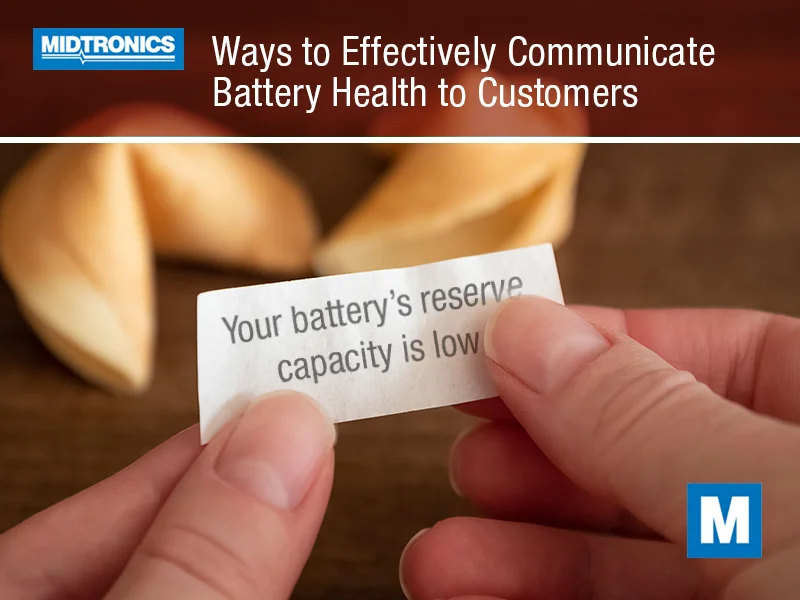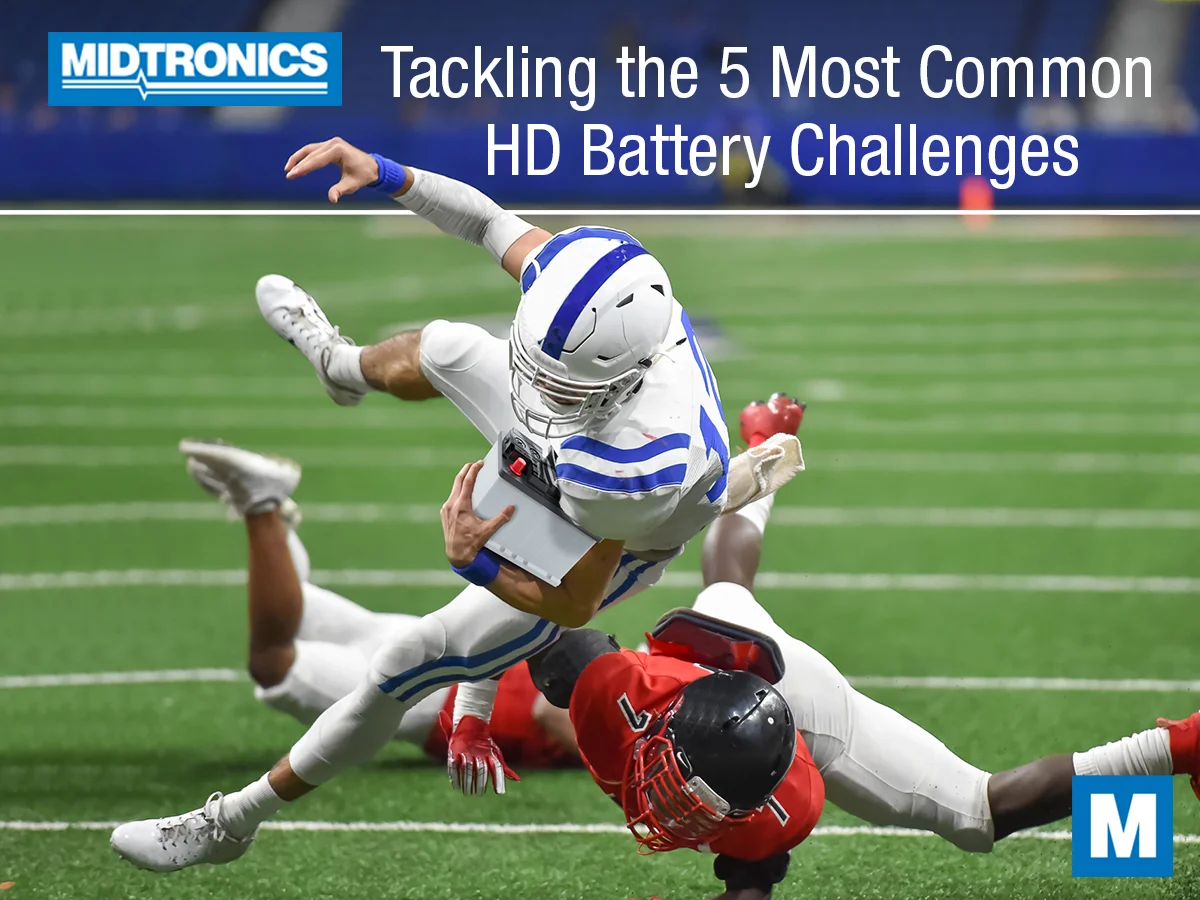No driver wants to see the glaring battery warning light on your vehicle’s dashboard. This little red light might seem insignificant, but it can signify serious problems with a car’s electrical system, including the battery and alternator. And when these car owners come through the service drive to have their cars checked out, they’re already worried and frustrated.
Too many vehicle owners skip the diagnostic step and install a new battery right away, and often it doesn’t resolve the symptoms in the long term. But what exactly triggers this warning light, and why is it important to ask more questions when the customer complains of it? Let’s delve deeper into these questions.
Understanding the Battery Warning Light
As technicians and service personnel, you’re familiar with it already. The battery warning light is red, and it’s typically shaped like a rudimentary semblance of a battery and lights up when there’s an issue with the vehicle’s charging system. It doesn’t necessarily mean the battery itself is at fault.
It could be due to too much voltage (overcharging) or too little voltage (undercharging), and those conditions could be intermittent or constant. The battery light only illuminates when the condition is present in the moment.
If it’s due to low voltage, the light triggers according to parameters set by the manufacturer. On older cars, it would often come on when output dropped below 13.5 volts. But on newer cars where the alternator output cycles, it can drop to 12.6 volts under normal conditions before cycling back on, so the light might only come on when it drops well below a full battery charge of 12.6 volts.
If it’s due to overcharging, the voltage exceeds 15 amps, typically, and the battery warning light will pop on.
Causes of a Battery Warning Light
The light itself is only an indication of voltage that’s outside of normal operating conditions, and it’s not exactly useful to diagnose the problem at its root. One of the most common causes is the alternator assembly. An issue with the internal voltage regulator is typically the source of the problem, especially when overcharging is the concern, but it can also be problems with any other component like the brushes or a broken or worn contact.
Another common, albeit rather obvious, concern that can be the cause is a broken belt. It’s something you’ll likely notice immediately when you open the hood since the alternator or serpentine belt will be missing. It’s usually accompanied by other symptoms, depending on the vehicle design, such as lack of power steering or engine overheating.
And while a battery isn’t commonly the faulty component triggering the warning light, it is possible. When a battery has failed in some way, such as an internal short from vibration or jostling damage or degradation from age, it may not be able to recharge well.
If those concerns don’t end up being the root cause, then there’s potentially a broken or loose connection somewhere in the charging system. Fasteners can become loose from vibration over months or years, or a connector can become corroded. Battery terminals can also be the culprit, if corrosion builds up between the clamp and the post.
Importance of Addressing the Battery Warning Light
Ignoring the battery warning light can lead to a host of problems, and they can be inconveniences like the radio or power windows not working properly or serious like lights being too dim or the engine eventually stalling.
For overcharging conditions, despite being less common, the battery can overheat and become damaged permanently, leak electrolyte, or even explode due to hydrogen vapors escaping the case.
For undercharging conditions, it can strain other components like the alternator, the wiring, or systems that aren’t getting proper voltage. If they fail, it can lead to exorbitant repairs for the customer, plus it’s difficult to trace the damage sometimes.
And for the car owner, the cost is a major concern for their repair. Consistently overcharging or undercharging the battery will eventually cause it to fail. An alternator that has to work too hard will also quit in time. And if it causes other problems like a fried ECM, it could be more than $1,000 to correct a problem they might feel you should’ve caught sooner.
Lastly, there’s the safety risk of driving a car that could stall in traffic or leave them stranded. Getting it fixed for them sooner rather than later is as much about peace of mind as anything.
How You Can Deal with the Battery Warning Light Best
The battery warning light is more than just a minor annoyance—it’s a critical indicator of potential issues within a vehicle’s electrical system. Whether it’s overcharging, undercharging, a faulty alternator, or simply an old battery, it’s crucial to address these issues promptly to prevent further damage, save costs, and ensure customers’ safety on the road.
If a vehicle owner requests a battery check, it’s worthwhile asking if there’s an underlying condition they’re worried about. And if there is, your quick battery test in the service drive might not be sufficient to catch it – especially if a charging system test isn’t done at the same time. A more thorough diagnosis is likely going to be necessary at that point, performing a deeper dive into the charging system.
But even if there isn’t a customer concern, you can ward off the battery light for many vehicle owners by consistently testing every battery in the service drive when they arrive. This quick test can point out shortcomings in the battery, and even in the charging system, saving the car owner a subsequent visit on less pleasant terms.




